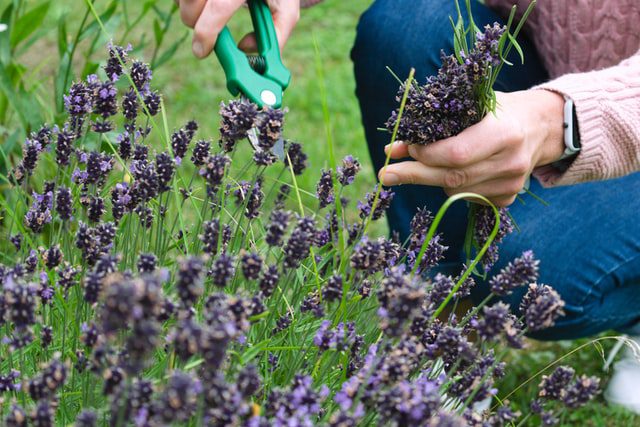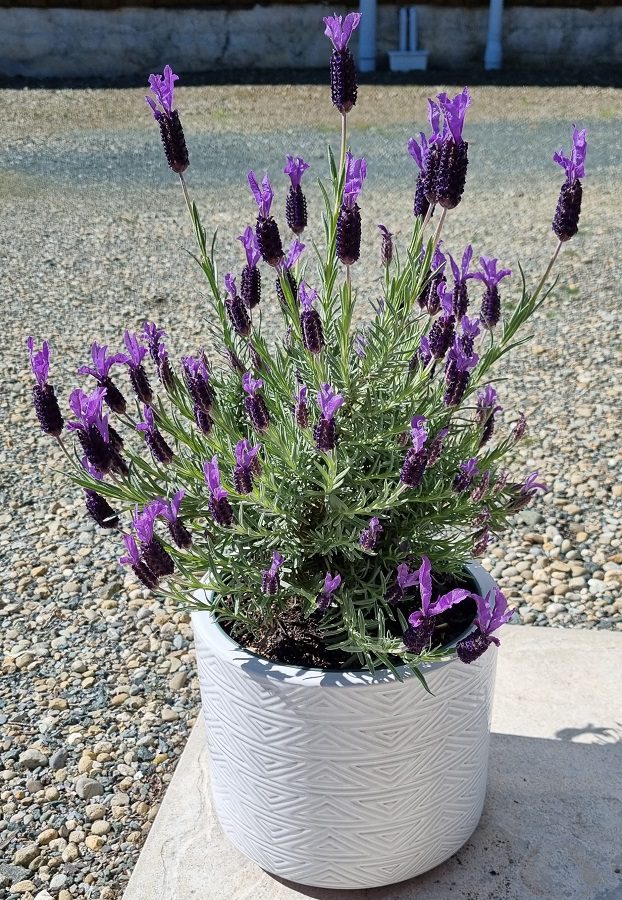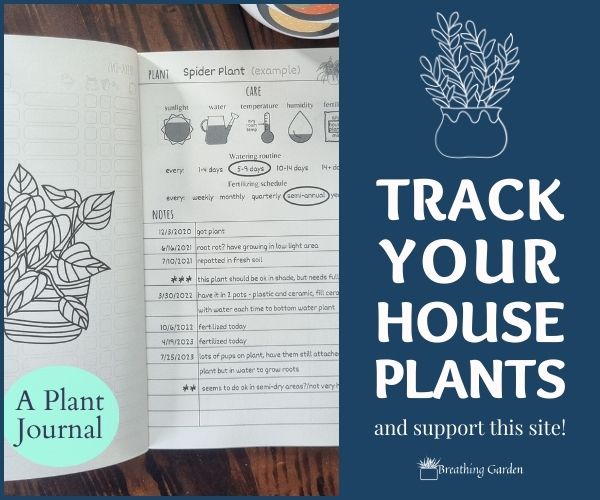Lavender is a beautiful, fragrant flower that can be used in many ways. But sometimes it turns brown – so why is my lavender turning brown? And how can I save it? In this post, we will explore the four most common reasons why lavender turns brown, and give you tips on how to correct the problem, so you don’t have to ask yourself why is your lavender plant dying?!
*This post may include affiliate links. When you purchase items from these links, we will receive a small commission, at no extra cost to you, to help support this website. Thank you for your support! Read more ->
The Most Common Reasons Lavender Turns Brown
Keep in mind that some plants, lavender included, can turn brown when it cools off. So, if your lavender is brown and it’s winter – give it a little time. If the weather warms up and your lavender is still brown, then one of these four reasons may be to blame:
- Watering issues
- Nutrient problems
- Seasonality
- Not pruning
Being left in the shade can also cause issues with your lavender turning brown!
Other common issues with lavender: Why is my lavender yellowing? Why is my lavender wilting?
Water Issues Causes Lavender Turning Brown
If you notice that the leaves on your lavender plant are turning brown, it could be a sign that you are either overwatering or underwatering it, or having humidity problems.
Overwatering Your Lavender
When lavender is watered too frequently, the roots can’t get the oxygen they need and they start to suffocate. This causes the leaves to turn brown and die. This can especially be a problem if you’re growing your lavender in a container.
To fix this problem, make sure you are only watering your lavender when the soil is dry to the touch. If possible, try to water it in the morning so that the plant has time to dry out before nightfall. Lavender loves well-draining soil – so make sure your pot has drainage holes, or even add sand to your potting mix to help drainage.
Keep reading: why is my lavender turning grey?
Underwatering Your Lavender
Lavender can also turn brown if it’s not getting enough water. This is usually due to the plant being grown in too small of a pot, or not being watered frequently enough.
The best way to fix this problem is to make sure you are watering your lavender regularly, and using a pot that is large enough for the plant that you’ve got.
Try to keep your lavender on a regular watering schedule, at least to feel the soil to see if it needs to be watered. Keep in mind, your lavender will need to be watered more during hot summer days if it’s in direct sun all day, compared to cooler weather or shade. And if you’re growing an indoor lavender plant, there are other considerations to think of too!
Humidity Problems Causes Lavender Browning
If the leaves on your lavender plant are turning brown and crispy, it could be a sign of too much or too little humidity.
Too Much Humidity – Lavender does not like humid conditions – especially if it’s in direct sun. If you live in an area with high humidity, try to grow your lavender in a pot so you can move it around to find the perfect spot.
Too Little Humidity – If the air is too dry, it can cause the leaves on your lavender plant to turn brown and crispy. The best way to fix this problem is to create a humid environment for your lavender by misting it with water regularly, or growing it near other plants.
Nutrient Problems Causes Lavender to Turn Brown
Lavender can also turn brown if it’s not getting the nutrients it needs. This is usually due to the plant being grown in poor quality soil, or not being fertilized regularly.
If you notice that your lavender is turning brown, and it doesn’t seem to be over or under watered, think about the last time that you fertilized your plant. Make sure you are using a high quality potting mix, and fertilizing your lavender at least twice a year.
Read more about the best type of soil for lavender here.
Seasonality Causes Lavender to Turn Brown
Lavender is a summer flowering plant, so it’s not surprising that the cooler weather can cause it to turn brown. If your lavender is turning brown and it’s fall or winter, don’t worry – it’s just getting ready for its dormant period.
This can vary depending on where you live for temperatures and how cold it gets as well, if lavender goes into a dormant period. Especially if you’re just noticing the flowers turning brown, that’s expected towards the end of summer!
Not Pruning Causes Lavender Browning

If you don’t prune your lavender regularly, it can start to get leggy and the stems can turn brown.
Pruning not only helps to keep your lavender plant looking nice and tidy, but it also encourages new growth.
To fix this problem, make sure you are pruning your lavender at least once a year. You can also prune your lavender after the first time it blooms in late spring to encourage a second round of flowering in late summer.
A Few Other Reasons Lavender Turns Brown
A few other, less common issues lavender is turning brown can include pests, disease that isn’t water related, or can also be an issue with the plants that are growing around it.
Pests – If you notice that your lavender plant is turning brown, and you see small insects on the plant, it’s likely due to pests. The best way to fix this problem is to treat your lavender with an insecticide.
Disease – If your lavender plant is turning brown, and you see spots on the leaves or stems, it’s likely due to disease. The best way to fix this problem is to treat your lavender with a fungicide.
Companion planting is great for many plants, but some plants can compete for nutrients, water, or shade your lavender. So make sure you’re choosing the right kind of plants to grow near your lavender, rather than have them competing for space!
Conclusion: Why is My Lavender Turning Brown?
Lavender is a beautiful, fragrant plant that’s easy to grow. But sometimes lavender can start to turn brown, and it’s not always clear why.
Now that you know the four most common reasons why lavender turns brown – water issues, nutrient problems, not enough pruning, and seasonality – you can take steps to fix the problem.
With a little TLC, your lavender plant will be back to its beautiful self in no time!



